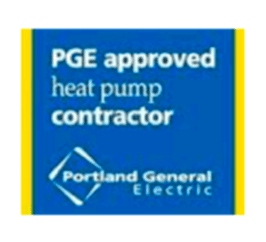Imagine a power outage in the dead of winter or during a scorching summer heatwave. How would you keep your home comfortable? For homeowners, finding ways to heat or cool their houses without relying on electricity is crucial for their family’s comfort in a stressful situation.
If you live in a geographic region that tends to lose electricity, this post will explore practical, eco-friendly methods to heat and cool your home without electricity. You’ll find valuable insights into keeping your living space comfortable year-round—even when the power is out—from alternative heat sources to passive cooling techniques.
What Not to Do
When faced with a power outage, there are common mistakes to avoid to maintain comfort.
- Don’t open windows or doors unnecessarily. This allows heat to escape in winter or cool air to enter in summer.
- Avoid using unsafe heat sources without adequate ventilation indoors, as they pose serious fire and carbon monoxide risks.
- While layering is essential in the cold, resist hoarding blankets or layering too many clothes, as this can restrict circulation and lead to overheating.
- Keep gas-powered generators away from the home. Carbon monoxide is a silent killer.
Heating Your Home Without Electricity
Heating your home without electricity can be done with a little planning ahead. Using nature’s resources and creative solutions, you can ensure comfort for your family during power outages.
Alternative Heat Sources
Several alternative heat sources can keep your home warm without electricity. Wood stoves, solar panels, natural gas generators, and propane heaters are among the most popular options.
If you are fortunate enough to have a wood stove and a pile of firewood, you are ready to have reliable heat without electricity.
Propane heaters, though requiring a fuel source, provide another reliable heating option, especially for smaller spaces.
Pellet stoves are also a great option if you have one installed.
Solar heaters harness the sun’s energy to generate heat. These systems can be as simple as DIY solar air heaters made from soda cans or as sophisticated as professionally installed solar thermal panels.
Tips for Optimizing Heat Sources
Different rooms and weather conditions require different heating strategies. Solar heaters should be placed in rooms with the most sunlight exposure. Ensure windows are clean to maximize solar gain, and consider adding thermal mass—materials like stone or brick—that absorb and store heat.
Install wood-burning stoves centrally to allow heat to radiate evenly. Use fans to distribute warm air and ensure your wood supply is dry and seasoned for efficient burning. Propane heaters should be used in well-ventilated areas to prevent the buildup of harmful gases. Install carbon monoxide detectors as an additional safety measure, and make sure to add a battery back up so they work when the power goes out.
Keeping Warm Without a Heat Source
When you are without electricity or any other heat source, there are a few ways for you and your family to stay warm without a wood or propane stove.
- Layering clothing is key—wear multiple layers to trap body heat effectively and make sure to stay dry.
- Camp out inside, using blankets, towels, or sleeping bags to keep warm.
- If you don’t have a room with carpet, lay mattresses or blankets on tile or wood floors
- Close off unused rooms to concentrate heat in a smaller area, and use draft stoppers on doors and windows to prevent cold air from entering.
- Engage in physical activity (but don’t sweat) to generate body warmth, and gather with family or friends for added warmth and morale.
- You probably don’t need any excuses, but now is a good time to cuddle with your furry best friend.
- Use the sun. If you have a south-facing room with a lot of sun, make that your base camp. Open up blinds and drapes to let the sun shine in.
Cooling Down a Room Without AC or Electricity
When you find yourself without power or AC on a hot day, it may seem impossible to cool down, but by using passive cooling and low-tech devices, you can make yourself and your family more comfortable even without AC. Passive cooling uses the natural environment to keep a room cool. Techniques include shading, ventilation, and insulation. Low-tech devices like evaporative coolers, which use water to cool the air, and solar or battery-powered fans can make a significant difference.
- Use awnings and shutters to block direct sunlight. Planting trees can be a long-term option for cooling your home.
- Open windows and doors at night to allow cooler air in and close them during the day to trap the cooler air inside.
- Place a shallow pan of ice in front of a battery-operated fan to create a rudimentary air-conditioning system that cools without electricity.
- Hang wet towels or sheets in front of an open window can also create a DIY evaporative cooling system.
- Sealing off hot rooms that get direct sunlight can dramatically improve your home’s cooling efficiency.
- Use heavy curtains or shades to block sunlight, and consider applying weather stripping to eliminate drafts.
Remember, staying hydrated is also important when trying to keep cool without AC. Drink plenty of water and avoid sugary drinks that make you feel even hotter.
How to Prepare
The famous saying “Hope for the best, prepare for the worst” is something most homeowners should keep in mind, especially if they live in an area prone to power outages (or don’t have AC).
While there are things you can do if you are caught unprepared, the best way to get through tough situations is to plan ahead.
- Do a home energy audit
- Plant trees to block the sun and create a cooling effect around your home
- Consider getting a generator
- Check insulation and seal windows and doors
- Have batteries on hand
- Invest in battery-operated fans and lights
- Install surge protectors to prevent dirty power surges (as well as surges when your power is restored after an outage) and protect sensitive electronics
Regular maintenance ensures your systems run efficiently. Clean solar panels, check wood stove chimneys for blockages, and inspect propane heaters for leaks. Periodically update your preparedness based on new technologies or changes in your home’s structure to maintain efficiency and safety.
What to Do When the Power Comes Back On
Once power is restored, it’s crucial to ensure your HVAC system is functioning optimally.
- Check your thermostat settings—reset any that may have reverted to factory defaults.
- Reset any tripped circuit breakers
- Give your system time to reboot
- Inspect your air filters for dirt and debris — a clogged filter can hinder airflow and efficiency.
- Listen for unusual sounds when the system kicks back on, as these could indicate underlying issues.
- Check for error codes on your system’s display and consult the manual if needed.
- Ensure all vents are unobstructed to allow for proper air circulation throughout your home. Snow or frozen condensation could block air vents, leading to carbon monoxide buildup.
If your HVAC system doesn’t turn back on or isn’t blowing hot or cold air after a reasonable amount of time, call a Jacobs technician for troubleshooting. Being proactive helps maintain a comfortable and safe living environment for you and your family.
HVAC Troubleshooting Experts
Planning for an outage will help you navigate the challenges of heating and cooling your home without electricity. Once the power comes back on and you have tried all of the troubleshooting techniques to restore power to your HVAC equipment, Jacobs Heating & Air Conditioning is here to help.Our team has years of experience addressing heating and cooling issues caused by sudden power outages quickly and efficiently. You can schedule your next tune-up and help your HVAC system be prepared for extreme weather in any season. No matter what you need, we’re always just a phone call away.










